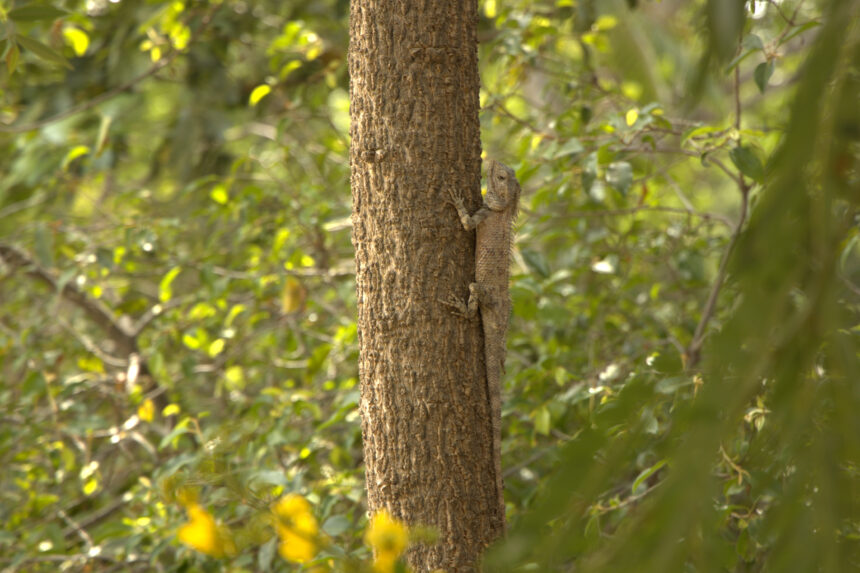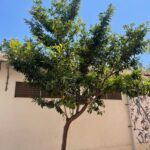On a bright sunny afternoon when we stepped out as a class to have our routine fun time during our PE session, I lazily walked towards the trees to settle down for a relaxed sojourn under its shade. As I edged closer to the tree, I noticed a swift movement and gazed randomly to catch a glimpse of ஓணான் camouflaged on the tree bark. Though a common sight in our school campus, this beauty often captures my attention and gets me amazed by its ability to blend with the surroundings.
The oriental garden lizard, my dear little ஓணான் as I would fondly address it to, is also called the eastern garden lizard, Indian garden lizard, common garden lizard, bloodsucker or changeable lizard. It is an agamid lizard found widely distributed in SE Iran, Afghanistan, Bangladesh, Bhutan, Cambodia, China (South) (Yunnan, Guangdong, Guangxi, Hong Kong, Hainan Island), India (including the Andaman Islands), Indonesia (Sumatra), Malaysia (Western), Maldives, Mauritius (Reunion, Rodrigues), Myanmar, Nepal, Pakistan, Philippines, Sri Lanka (Ceylon), Thailand, Vietnam (including Pulo Condore Island). It measures over 10 cm (3.9 in) in length from snout-to-vent but could measure upto 37cms (14.5in) when including its tail. Being an insectivore, they are comfortable consuming insects such as crickets, grasshoppers, and ants; as well as small vertebrates, including rodents and other lizards including the common house geckos and day geckos.
They adapt well with humans and are a common sight around us, maybe on a twig of a tree, a wall, a hedge or just about everywhere solitarily loitering around. During hot summers you could always catch a glimpse of these fellows sneaking from under the bushes to get hold of a small insect or larva. Their teeth are designed for gripping their prey and not tearing apart. Hence, they shake the prey and swallow them whole. I even read that young, inexperienced changeable lizards may choke on prey that is too large.
Some important facts that I encountered were that the oriental garden lizards belong to the family Agamidae which includes over 300 species of iguanian lizards indigenous to Africa, Asia, Australia, and a few in Southern Europe. Many species are commonly called dragons or dragon lizards. Unlike some other lizards, they do not drop their tails (autotomy), and their tails can be very long, stiff and pointy. These lizards can move each of their eyes in different directions and they are known as “changeable lizards” as they have the unique ability to change colours during the breeding season. oriental garden lizards have well-developed, strong legs and an excellent vision.








